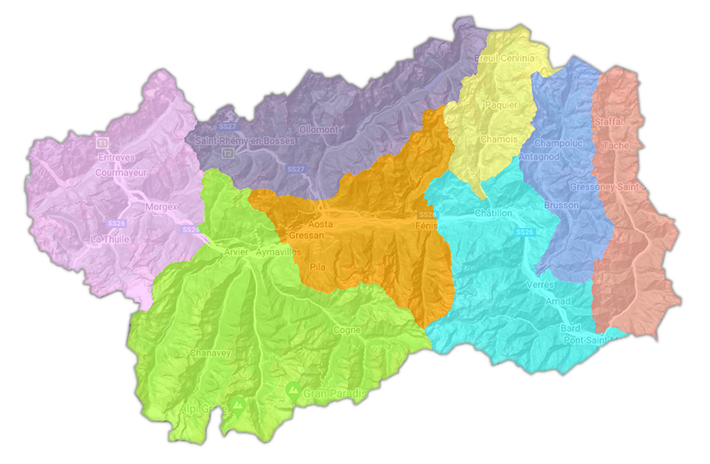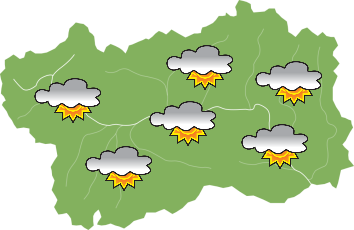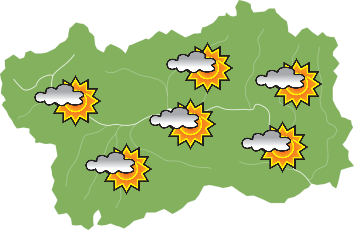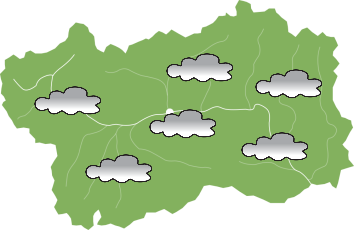The itinerary starts from and arrives at the castle of Saint-Pierre, restored to its new splendor by recent renovation.
The route involves the hilly area of Saint-Pierre, in the direction of the Tache hamlet, and initially, it winds along an asphalted road with views of the mountains and the castle of Saint-Pierre.
After passing the hamlet of Tache, you continue on towards Bussan Dessus and, upon reaching the crossroads for
Along this road, looking towards the valley, you can see the priorate of Saint-Pierre, the profile of the Grivola and the entrance to the valleys of the Gran Paradiso national park, while looking uphill you can observe the xeric environments of Mont Torretta-Bellon, a Site of Community Importance (SCI), and the terraces, with the picturesque dry stone walls, which characterize the Torrette wine vineyards.
The area is very hot and it is advisable to walk it in spring or autumn. The short-toed snake eagle knows this very well; this is an eagle that migrates from Africa every year to nest in these places, exploiting these arid areas to hunt reptiles.
After about 2.5 km you come to the end of the farm road, in the hamlet of Pertusat, in the municipality of Sarre. From there, you head south along a narrow asphalted road, walking among the houses of the place, to reach the royal castle of Sarre, which is well worth a visit. Formerly the residence of the king of Italy during his hunting stays in Valle d’Aosta, it preserves hunting trophies and memories of the royal house of Savoy.
You walk along the side of the castle heading towards the Aosta plain, enjoying a wide panoramic view, and you proceed southwards along a dirt road that leads to a tree-lined path.
The path joins state road no. 26 where, near a roundabout, you take the exit that goes towards Aymavilles. You continue along regional road no. 47 towards Aymavilles for about 400 meters, then take the asphalted road that goes towards the farmstead located to the right of the motorway junction, in the center of a meadow with cultivated plots of land.
After the farmstead, you continue for another 200 meters and use the motorway underpass to move over to the left bank of the Dora Baltea river, under the gaze of the Aymavilles castle.
You continue along this little road and, once you have also gone through the second motorway underpass, a tree-lined cycle path begins which goes along the Dora Baltea. Here, on the right, it is possible to admire the apple orchards that distinguish this part of the itinerary. The apple is the “prince” of fruits in this region, where the annual production exceeds 35 thousand quintals. There are four typical varieties of the Valle d’Aosta apple, two of which are recognized as traditional: the Renetta and the Golden Delicious of Valle d’Aosta.
You continue on along the cycle path among meadows alternating with apple, grape and other fruit orchards, until you reach an iron bar that delimits the access to the cycle path. From there, you take the road that heads north-west towards the mountain and, after about 150 meters, you take the uphill path that leads to the Sarriod de la Tour castle (the castle will reopen on 5th of August).
When you reach the castle, going back a few steps, you take the path that leads back to the hamlet of Saint-Pierre through some orchards.
In the residential area, you go along via della Tour for about 200 meters and then take via della Libertà. After crossing the underpass of state road 26 and, after going about 150 meters east, and going by a restaurant, you turn left and take the stone pedestrian street, called “the ramp”, which reaches the church of Saint-Pierre and leads back to the castle.
Watch the videos:










